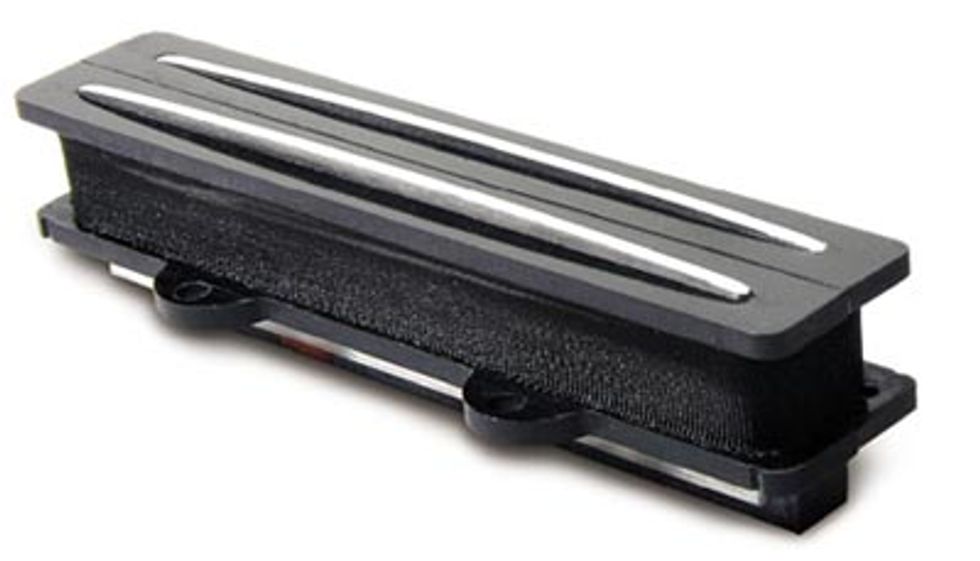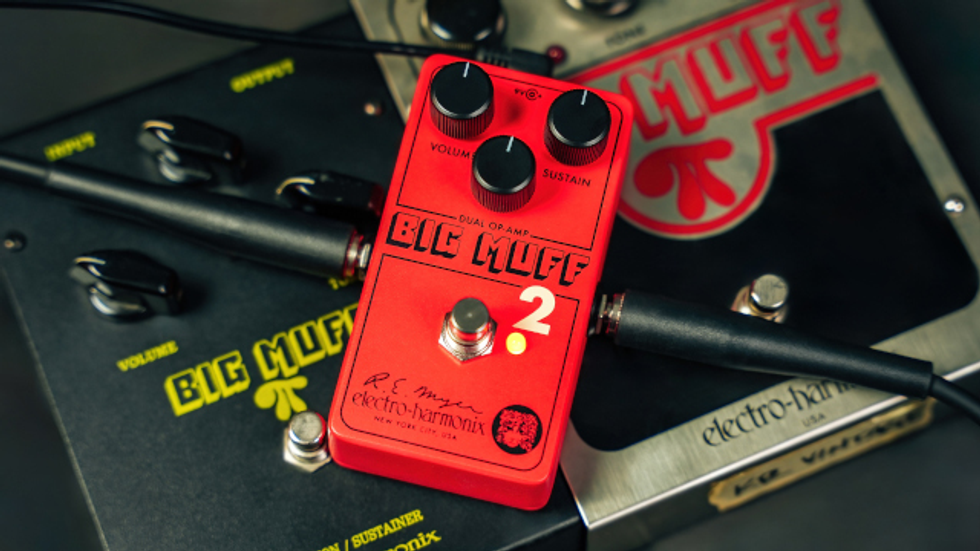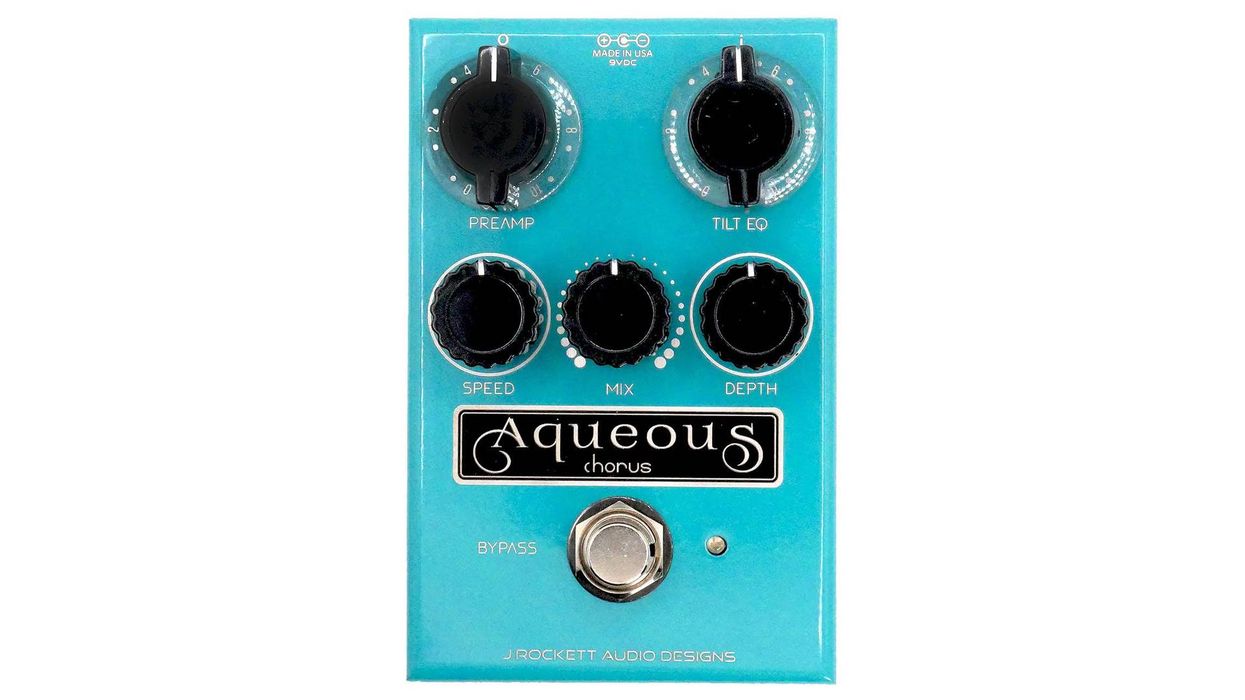 To be honest, I wasn’t as psyched about doing this review as I normally am to evaluate new gear. The bass that I decided to use to test out the new Joe Barden J-Style bass pickups was a 2001 Fender American Deluxe Jazz 5, which comes equipped with active electronics. I am not exactly what you would call “gifted” with a soldering iron and have ruined more than my fair share of potentiometers and capacitors trying to fix things in the past, so I had a certain level of apprehension coming into this. On top of that, I liked the sound and the tone shaping capabilities of the stock Fender electronics that were already in the bass and was afraid I’d have a hard time reinstalling them when I was done with the review. After some smooth talking from my editor, I decided to dive in, despite my anxiety about the situation – he assured me that there were plenty of qualified techs in NYC who could bring my bass back from the dead if I blacked out with soldering iron in hand.
To be honest, I wasn’t as psyched about doing this review as I normally am to evaluate new gear. The bass that I decided to use to test out the new Joe Barden J-Style bass pickups was a 2001 Fender American Deluxe Jazz 5, which comes equipped with active electronics. I am not exactly what you would call “gifted” with a soldering iron and have ruined more than my fair share of potentiometers and capacitors trying to fix things in the past, so I had a certain level of apprehension coming into this. On top of that, I liked the sound and the tone shaping capabilities of the stock Fender electronics that were already in the bass and was afraid I’d have a hard time reinstalling them when I was done with the review. After some smooth talking from my editor, I decided to dive in, despite my anxiety about the situation – he assured me that there were plenty of qualified techs in NYC who could bring my bass back from the dead if I blacked out with soldering iron in hand. "The next thing that grabbed my attention was the consistency of volume from string to string and from note to note. No matter where on the neck I played or what string I was on, the volume was even."
You can imagine my relief when I opened up the JB5 box and found not only a minimum of parts, but simple, concise and easy-to-understand instructions. The pickups came packaged with three ceramic capacitors, mounting screws and four foam rubber mounting sponges. While Barden recommends certain values for the capacitors and potentiometers that they consider best, some players prefer to use caps and pot values of their own choosing to further customize their sound. The pickups do not normally ship with capacitors.
The pickups themselves are beautiful. They have a polished black bobbin with two highly polished steel blades per pickup, and there’s a decidedly modern aesthetic surrounding them. The craftsmanship on each pickup was flawless; they employ high quality wiring throughout and the contact points were clean and free from solder drips or excessive glue. Both pickups fit perfectly into the body cavities and the dense, rubber mounting pads allowed for precise height adjustment and a very solid connection between the pickup and the bass.
After attaching the pots and input jack to the mounting plate, I carefully followed the instructions and connected all the wires and capacitors. These capacitors allow for a more useful and musical attenuation of high frequencies when the pots are partially rolled back. Since a passive pickup system lacks the EQ and tonal shaping capabilities active systems have, the Bardens rely on blending the volume of each pickup with the single tone pot to achieve their various tonal possibilities.
Bass Notes
After (successfully) wiring it all up, I unleashed 20 seconds of concentrated bass fury. The first thing I noticed was that it sounded like somebody took a blanket off of my amp. There was much more air and midrange punch than with the stock system. The bottom was tight and well defined, without even a hint of boominess or mush. It actually felt like I could hear and feel the wood in my bass. It sounds weird to say, but the instrument somehow felt more connected and solid. Amazingly, it retained all the classic Jazz bass tone and midrange presence you’d expect, but, depending where I played on the bass and the types of dynamics I used, I was able to coax some modern sounding midrange growls and burps out of it, in addition to the authentic J-bass sounds.
The next thing that grabbed my attention was the consistency of volume from string to string and from note to note. No matter where on the neck I played or what string I was on, the volume was even. That may seem like a minor detail, but the note consistency actually gave me better control over my dynamics and made the bass more intuitive. It may sound like hyperbole, but I suddenly wanted to play this bass every chance I had.
The next and perhaps most startling thing that I observed about these pickups was how quiet they were. I’m talking “I didn’t realize my amp was so noisy until I installed these pickups” quiet. It’s not that the stock pickups were noisy – it’s just that the noise floor of these pickups is so low that it actually inspired me to play with more feel. With these pickups, effects like chorus and flange seemed to sound better, and the effect loop in my amp performed more quietly. I also found that with the Barden pickups, my bass became immune to RF interference – interference that had, at times, given the original pickups a bit of a hard time. Just to make sure I wasn’t dreaming I took to the bass to a rehearsal studio in NYC that is notorious for hum and RF interference. The J-style pickups remained completely unfazed.
A big part of why these pickups are so quiet is because Joe Barden employed his version of the Hum Canceling, two-coils-per- pickup design. The thing that makes these pickups so unique and different from, say a Precision bass pickup, is that while they both employ dual coil designs, the voicing of the Baden J-style pickup is authentic, single-coil J-bass all the way. I even compared the review bass to a stock, passive J-bass so I could see how they measured up tonally. I found that not only did the Barden’s provide a large range of beautiful tones, but they allowed for an even broader palette of sounds beyond what the stock J-bass was capable of and did so with a much lower noise floor.
Obviously, these pickups don’t have the same type of EQ control that an active system provides, but compared to any other passive system, the tone shaping capabilities are vast. Most stock Jazz bass pickups experience a decrease in overall volume when you crank both volume pots – not so with the J-Styles. You can blend in various levels on each pot or keep them both cranked and the overall volume does not change unless you bring both pots down. Those capacitors I mentioned earlier also help in the EQ process, as they allow for the high frequencies to remain proportionally consistent when you roll off one volume pot or the other. In other words, the treble and mids don’t suffer when you turn the volume down, opening the door for many more usable sonic combinations. Given the quality of the sounds I was able to get, I didn’t miss the extra EQ functionality at all.
The Final Mojo
Coming in at almost $300 for a five-string set of pickups, the Barden J-Styles aren’t exactly cheap. That said, you’d be hard pressed to come up with something that improves the tone and performance of your bass to this level for less. In the end, my initial apprehensions about installing the J-Styles in my bass were unfounded, especially considering that there is no way I am ever taking them back out.
Buy if...
you want to get the most out of your Jazz bass and like quiet pickups.
Skip if...
you really need the tone shaping capabilities of an active pickup system.
Rating...
Single MSRP $169.95 Set MSRP $294.95 - Joe Barden Engineering - joebarden.com |
Our expert has stated their case, now we want to hear yours. Share your comments and ratings below.








![Rig Rundown: Russian Circles’ Mike Sullivan [2025]](https://www.premierguitar.com/media-library/youtube.jpg?id=62303631&width=1245&height=700&quality=70&coordinates=0%2C0%2C0%2C0)












